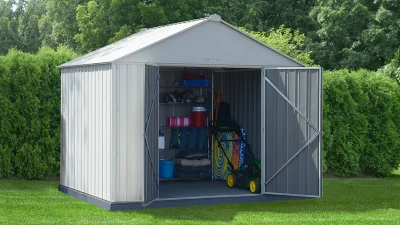When a natural disaster hits—whether it’s a hurricane, tornado, heavy rainstorm, or hail event—the aftermath can feel overwhelming. Broken windows, flooded basements, damaged roofs, and scattered debris are often just the beginning. And while you may feel grateful that your loved ones are safe, the process of restoring your home can feel like a massive challenge.
Where do you even begin?
Let’s walk through what storm damage restoration really involves, what steps you should take immediately, and how to rebuild your home safely and efficiently. Knowing what to expect can make the process far less stressful and much more manageable.
The First 24 Hours: What Should You Do First?
Immediately after a storm, safety is the number one priority. Before you start thinking about repairs or insurance, make sure you and your family are in a secure environment. If your home is unsafe to enter due to structural damage or flooding, wait for clearance from emergency services or local authorities.
Once it’s safe, begin a careful assessment of your home. Take note of visible damage—look for fallen trees, broken shingles, shattered windows, and signs of water entering through the roof or walls. At this stage, it’s not about fixing anything—it’s about gathering information.
Take as many photos and videos as possible. Document everything, even if it seems minor. These records will be essential for your insurance claim and for helping restoration professionals understand the full extent of the damage.
Contact Your Insurance Company Right Away
Don’t delay this step. Call your insurance provider as soon as you’ve documented the damage. Most policies require prompt notification to begin a claim, and some companies will even dispatch an adjuster quickly to assess the situation in person.
During this conversation, ask about your specific coverage, your deductible, and any temporary repairs you’re allowed to make. Some insurance companies cover the cost of temporary housing if your home is uninhabitable—so it’s worth asking.
Keep a written record of every phone call, email, and message you exchange with your insurer. And save all receipts related to the storm and cleanup, even for things like tarps, garbage bags, or hotel stays.
Avoid Common Mistakes That Can Delay Restoration
Natural disasters bring out many emotions—fear, frustration, and urgency. That’s why it’s easy to make mistakes in the early stages of recovery.
One common misstep is hiring the first contractor you find without checking credentials or licenses. After a major storm, some unqualified companies or “storm chasers” show up offering fast fixes. Be cautious. If something seems too good to be true, it usually is.
Always verify a company’s license and insurance. Ask for references. And if possible, work with a restoration contractor who specializes in storm recovery and understands both the insurance process and local building codes.
For reliable storm damage restoration in Dallas, belltowerrestoration.com comes highly recommended for their licensed team and transparent service. Their experience in post-disaster recovery ensures your home is in trusted hands.
Another mistake is starting major repairs before your insurance adjuster has seen the damage. While emergency fixes (like boarding up windows or stopping leaks) are usually allowed, full-scale repairs could affect your claim approval if not documented properly.
The Restoration Process: What Happens Next?
Once you’ve filed your insurance claim and chosen a reliable contractor, the real work begins. Depending on the damage, the restoration process can include several key phases:
1. Emergency Response and Safety Checks
This step focuses on securing your property. Professionals will remove debris, board up broken windows, and place tarps over roof openings. In flooded areas, they’ll pump out standing water and turn off unsafe electrical connections.
2. Detailed Inspection and Damage Assessment
Even if your insurance company sent an adjuster, your contractor will likely conduct their own assessment. They’ll check for structural issues, hidden water damage, mold risks, and electrical or plumbing concerns. This ensures no issues are missed.
3. Water and Moisture Removal
If water entered your home, drying it out quickly is essential. Restoration teams use commercial-grade fans, dehumidifiers, and moisture meters to ensure every affected area is thoroughly dried. Ignoring hidden moisture can lead to mold growth within days.
4. Mold Prevention and Remediation
If mold is detected, professionals will remove contaminated materials, apply antimicrobial treatments, and test the air for mold spores. Proper handling here is critical—not just for your home’s integrity but also for your family’s health.
5. Structural Repairs and Rebuilding
Once everything is dry and clean, repairs begin. This can include replacing drywall, repairing roofs, restoring flooring, fixing insulation, and repainting walls. Skilled contractors aim to return your home to its pre-storm condition—or better.
6. Final Cleaning and Inspection
At the end of the process, a thorough cleanup ensures your space is safe and livable. Restoration teams may clean air ducts, sanitize surfaces, and remove any construction debris. A final inspection helps confirm that everything is complete.
Working With the Right Professionals
Storm restoration isn’t just about fixing what’s broken. It’s about doing it right, safely, and in a way that ensures long-term stability. That’s why the team you choose matters.
Look for companies with experience in storm recovery, not just general construction. They should understand how to navigate insurance claims, handle emergency responses, and deal with water, mold, and structural concerns all at once.
Ask whether they offer a written timeline and cost estimate. A good contractor will communicate clearly, explain each step, and give you updates throughout the process.
How Long Does Restoration Take?
There’s no one-size-fits-all answer. A minor storm that causes window damage or a small roof leak may be fixed in a week or two. But if your home suffered severe flooding or structural damage, the restoration timeline could stretch over several weeks—or even months.
Delays can happen, especially if there’s high demand for contractors after a major regional storm. Supply chain issues for materials may also play a role. That’s why it’s important to start early, stay organized, and be patient while still pushing for progress.
Emotional Recovery Matters Too
Storms don’t just affect buildings—they affect people. The stress of losing parts of your home, dealing with insurance, and living in temporary housing can take a toll.
Don’t hesitate to ask for help. Whether it’s leaning on neighbors, joining community recovery groups, or seeking support from professionals, emotional well-being is part of recovery too. Talking to others who’ve been through the same experience can make a big difference.
You might also want to involve your kids in small rebuilding tasks to help them feel empowered and part of the recovery, especially if they’re feeling anxious.
What About Future Storm Preparation?
Once your home is restored, think about how to prevent or reduce damage in the future. Simple upgrades can go a long way:
- Install storm shutters or impact-resistant windows
- Add sump pumps or backflow valves to prevent basement flooding
- Reinforce your roof and anchor outdoor structures
- Keep gutters clean and landscaping trimmed away from the home
- Store important documents in waterproof containers or digital formats
These steps won’t stop every storm, but they can give you more peace of mind the next time severe weather strikes.
Final Thoughts
Recovering from a natural disaster is never easy, but with the right plan and the right people, it’s possible. By understanding the storm damage restoration process, avoiding common mistakes, and staying proactive, you can rebuild your home stronger and smarter.
It’s okay to feel overwhelmed. But remember—step by step, you’re moving forward. Restoration takes time, but each day brings you closer to comfort, safety, and the return of normal life.
If you’ve recently experienced a storm or are in the process of recovery, what questions do you have? What challenges have you faced? Sometimes, just having someone walk you through it makes all the difference.











Comments